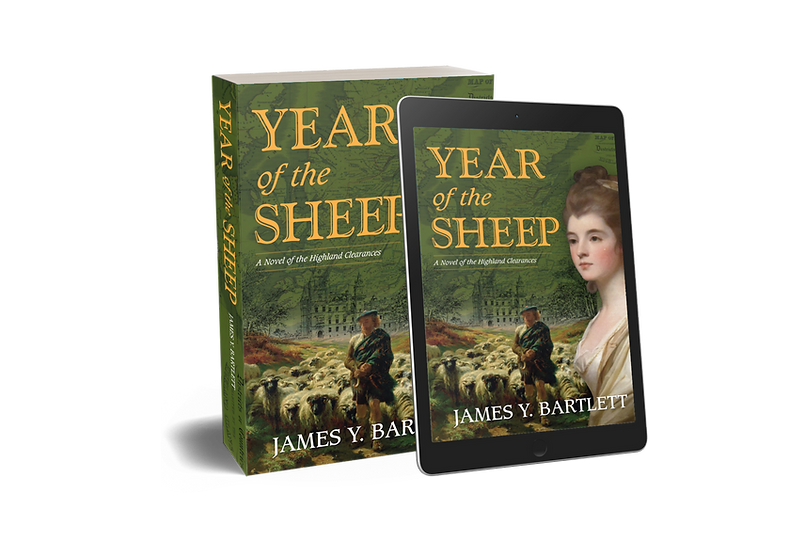Year of the Sheep
A Novel of the Highland Clearances
The clan chief in Scotland's wild North Country told the people they must leave their ancestral glens to make way for the coming of the sheep. The people of the village of Glencullen said no and made their stand for hearth and home.
Both parties were women.
James Y. Bartlett’s epic retelling of the sad story of the Highland Clearances focuses on the conflicts between Elizabeth Gordon, the 19th chief of Clan Sutherland and her people, especially the women of Glencullen.
Gordon owned the largest block of contiguous land in the Kingdom, had married the wealthiest man in Britain and, when they lived in Paris at the height of the French Revolution, had befriended the doomed Queen, Marie Antoniette.
In Glencullen, the wives of subsistence farmers believed in faeries and magick, revered Mute Meg the White Witch and followed the lead of the notorious outlaw and shape-shifter known as Billy Hanks.
In this magnificent historical novel, all these characters and their stories are deftly woven together in an unforgettable novel.
Semifinalist in the BookLife 2021 Fiction of the Year contest
"A fusion of the gothic novel and Virginia Woolf, this book delights in storytelling. Something mystical looms in Bartlett’s writing, making it a tale just as enchanting as its folklore."

Year of the Sheep
A Novel of the Highland Clearances
An epic retelling of the stories of the Highland Clearances, when Scotland's leaders changed from clan chiefs to landlords and landowners. Until the women of the village of Glencullen decided they would not make way for the herds of sheep taking over their ancestral lands, but stay and fight for hearth and home.
Available in Ebook, Trade Paperback and
Jacketed hardcover editions

Year of the Sheep
A Novel of the Highland Clearances
An epic retelling of the stories of the Highland Clearances, when Scotland's leaders changed from clan chiefs to landlords and landowners. Until the women of the village of Glencullen decided they would not make way for the herds of sheep taking over their ancestral lands, but stay and fight for hearth and home.
Available in Ebook, Trade Paperback and
Jacketed hardcover editions
